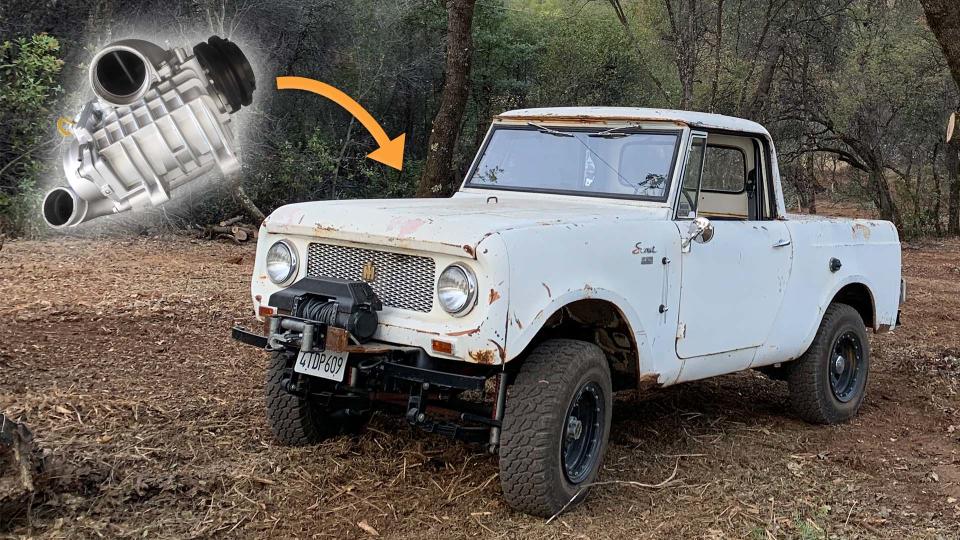1964 IH Scout With an Amazon Supercharger Can Finally Run 60 MPH Uphill

The International Harvester Scout 80 is a classic, not for its performance but for its character. Being the first generation of the Scout from 1960-1965, it has a special place in the heart of Binder diehards. That must be part of why Jeff Ismail from IH Parts America decided to build one with Sniper EFI and a supercharger he bought off Amazon. These mods boost the 152-cubic-inch four-cylinder to unknown power levels, but at least it can hit 60 mph going up the hill to his shop now.
Ismail and I talked over the phone about his project, which he jokingly calls "Hell on Wheels." No Scout 80 with the factory four-banger has ever been accused of going fast, which makes it even funnier. It's a 1964 chassis underneath that he originally bought off a local widow in Northern California, though he swapped a 1962 body onto it. It has an old, faded sticker on the driver's wing window that says "Hell on Wheels," and Ismail found it only fitting to keep it around.


The 152 four-cylinder makes quite a bit less than 100 horsepower in factory spec. When you consider Ismail's Scout has a 4.27 rear axle ratio and a Borg-Warner T90 three-speed, it's no wonder why the best uphill speed he could manage before was 40 mph. The PanDair supercharger cost him something like $370, so it didn't hurt his wallet that much. The original plan was to put a 196-cubic-inch engine in there, so worst case scenario, this sucker blows up and he tosses in the new powerplant.
Ismail admits he's "not a turbo or a supercharger guy," but after some finagling with the $30 blow-off valve he also bought off Amazon, he was able to make boost. "It went from 40 to 63 mph on the first pass [up the hill]," Ismail told me. When it doesn't make sense to put your project on a dyno, you just use whatever anecdotal evidence you can to measure performance gains. We've all done it, right?




 Yahoo Autos
Yahoo Autos 